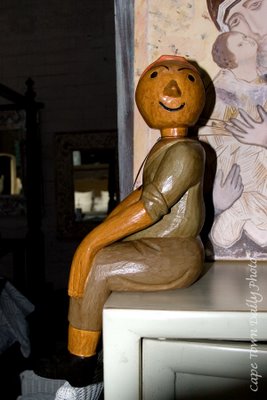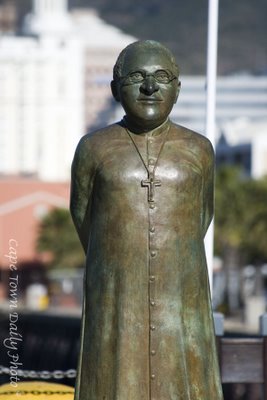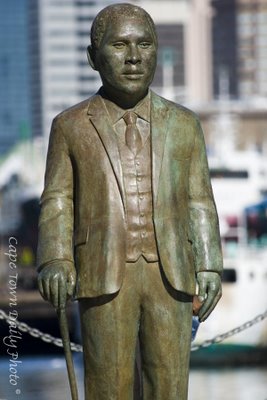
Back to Nobel Square at the V&A Waterfront for the third of the four bronze sculptures (see the
first and
second). This is Frederik Willem de Klerk, better known to South Africans as FW de Klerk... or even just "FW".
FW de Klerk was the President of South Africa from 1989 to 1994, during the final years of apartheid. I remember the 1989 elections well, though I was just 13 at the time; one of the opposition parties put up posters saying something along the lines of "He's just a new rider on a dead horse", implying that FW de Klerk taking over the reins of the National Party would not make a difference, since the National Party was still doing and saying the same old things.
Well, it seems that FW did in fact make a difference, unbanning the ANC, entering into negotiations with black leaders, releasing Nelson Mandela from prison and helping to end apartheid. He received the Nobel Peace Prize in 1993, and was made deputy-president under Nelson Mandela in 1994, a position he held until 1996.
I often wonder whether things would have been different if another leader had emerged in the National Party, or on the other hand, if the more liberal Democratic Party had been voted into power in the 1989 elections.
Labels: apartheid, art, history, politics, waterfront
 Since it's been a very rainy day and for the sake of readers who aren't quite as excited about the rugby results as we are, I decided to post a picture of this little guy - many kids' (and adults') comic book hero. I was surprised to find out that Tintin is actually quite the cult figure - just Google it. Perhaps I should have bought this wooden Tintin and sold it on eBay...
Since it's been a very rainy day and for the sake of readers who aren't quite as excited about the rugby results as we are, I decided to post a picture of this little guy - many kids' (and adults') comic book hero. I was surprised to find out that Tintin is actually quite the cult figure - just Google it. Perhaps I should have bought this wooden Tintin and sold it on eBay...









